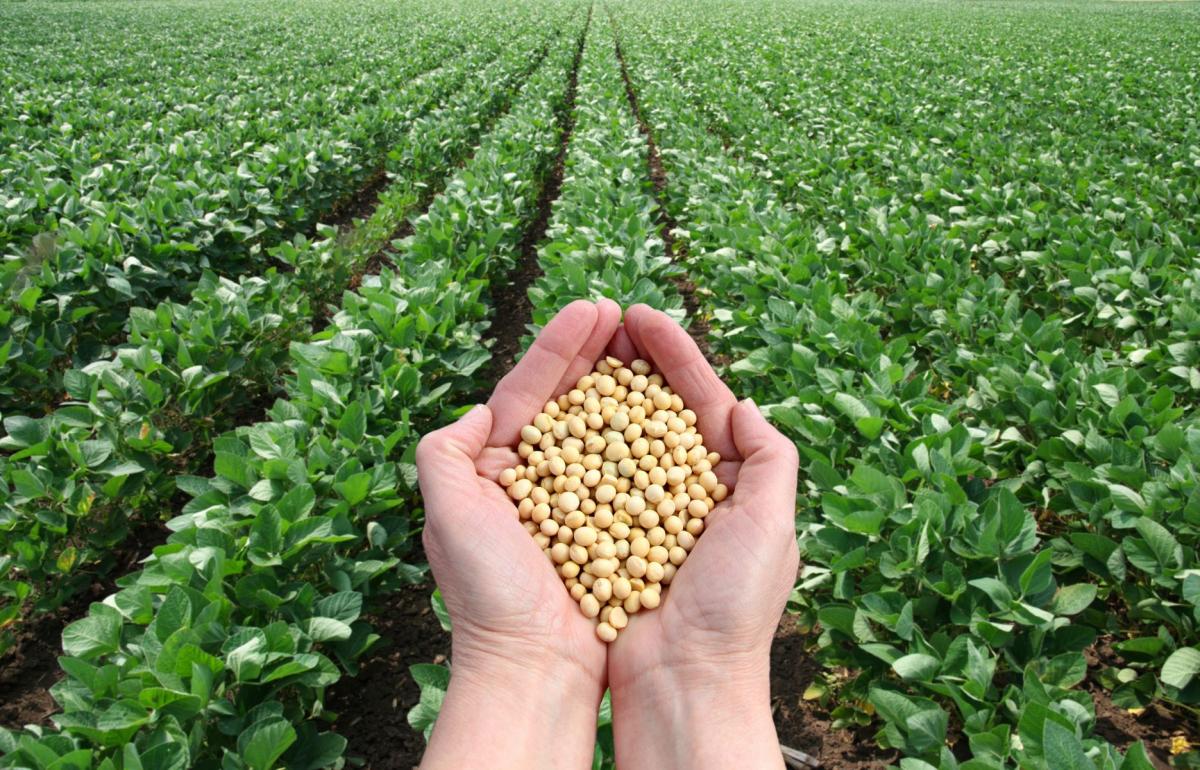Plant Disease: Phytophthora Root and Stem Rot, and Brown Spot
Phytophthora Root and Stem Rot
Phytophthora root and stem rot is a soil-borne fungal-like disease caused by Phytophthora sojae. This pathogen causes seed rots, pre- and post-emergence damping off of seedlings and stem rot of plants at various growth stages. Disease development is favored by soil temperatures is above 60°F and high soil moisture. In young plants, symptoms include rapid yellowing and wilting that is typically accompanied by a soft rot and collapse of the rot.
Closer examination of the stem shows dark discoloration of the stem that extends up from the root/soil line up the plant. Plants in early reproductive stages and beyond will have general yellowing of the lower leaves that progress upward on the plant and general overall wilting of the plant. As the disease progresses, death of the plant typically occurs.
Further examination of the root system will show lateral and branch root discoloration and the tap root will also show a brown discoloration. Splitting of the root, crown and stem will show a tan to brown discoloration along the outside portion of the stem, which extends up the plant (Figure 1). This brown discoloration that is observed when the plant is split is typically also evident on the outside of the stem. Figure 2 shows the disease cycle for phytophthora root and stem rot.
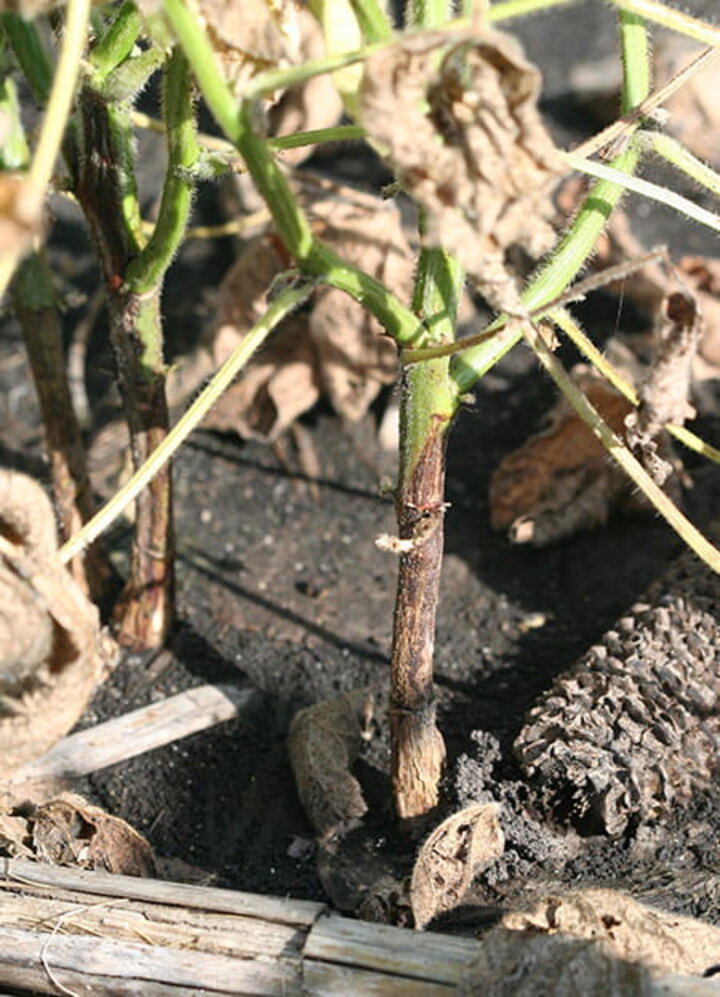
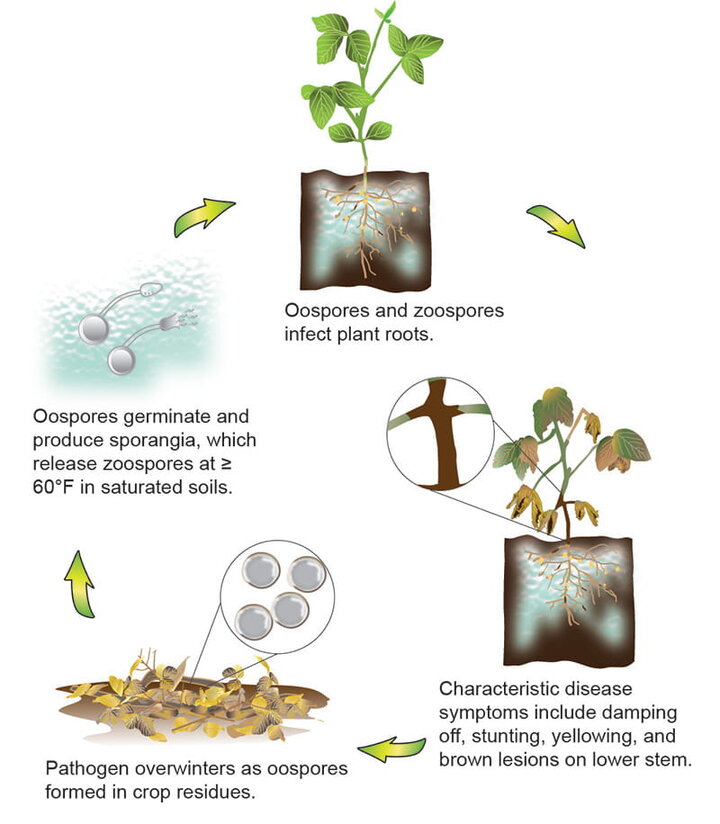
Phytphthora Root and Stem Rot Management
Seed Treatment Fungicide
Using increased rates of mefenoxam and metalaxyl is critical.
Cultural Management
Avoiding planting early in the season when soil temperatures are below 60°F and increase water drainage in the field when possible.
Genetic Resistance
Select varieties that have high tolerance to the disease and a resistance gene present in the plant. There are a variety of resistant genes available, so keep good records to know if that gene is working well in your field. If there appears to be high incidence of phytophthora in the field, change the resistance gene being used.
Brown Spot
Brown spot, also referred to as Septoria leaf spot, is a foliar fungal disease caused by Septoria glycines. This fungal disease overwinters year to year in infected soybean straw and is most favored during periods of high moisture and moderate temperatures (60°-85°F).
Symptoms first appear in the lower canopy of the crop. Angular, red to brown spot (Figure 3) that vary in size from tiny specks to ¼-inch diameter are observed on the upper and lower leaf surfaces. As the disease progresses, leaves turn yellow (Figure 4) and fall prematurely off the plant. Defoliation of the plant occurs from the bottom of the plant upward. With severe infections, irregular brown lesions with indefinite borders can develop on pods, stems and petioles.
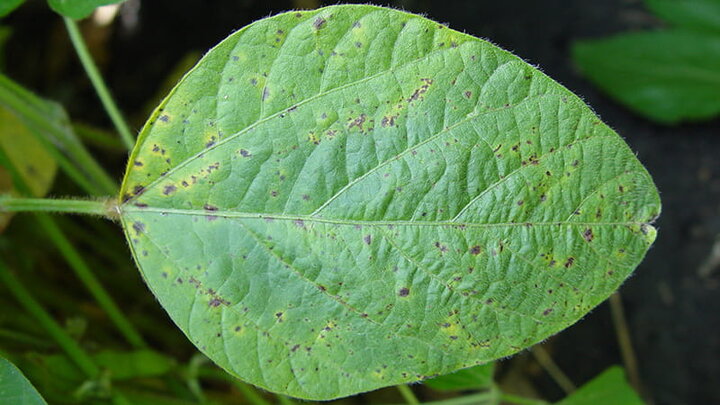
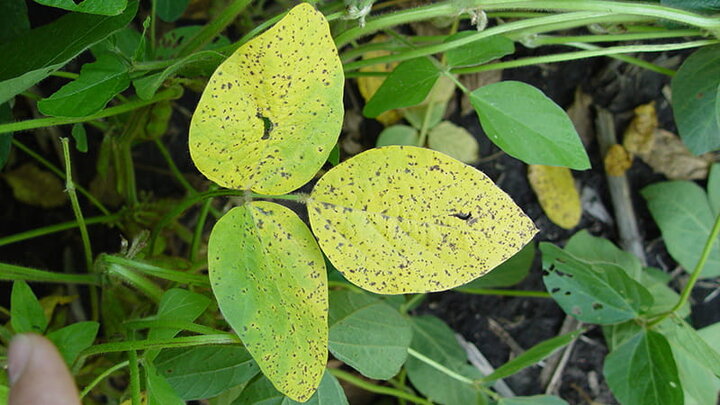
Brown Spot Management
Crop Rotation
This disease is residue borne, thus avoiding continuous soybean reduces disease pressure.
Tillage
Incorporating plant residue into the soil increases the decay rate and reduces the amount of inoculum present the next growing season.
Fungicides
Generally, brown spot only causes two to four bushel in yield loss. But in severe infections, a fungicide application may be explored.

Nebraska Soybean Board graciously provided the funding for the Soybean Management Guide.
Course authored by:
Amy Timmerman, extension educator; Aaron Nygren, extension educator; Brandy VanDeWalle, extension educator; Loren Giesler, Plant Pathologist Department head; Ron Seymour, extension educator; Keith Glewen, former extension educator; Charles Shapiro, emeritus extension soil scientist; Amit Jhala, extension weed specialist; Don Treptow, former graduate student
